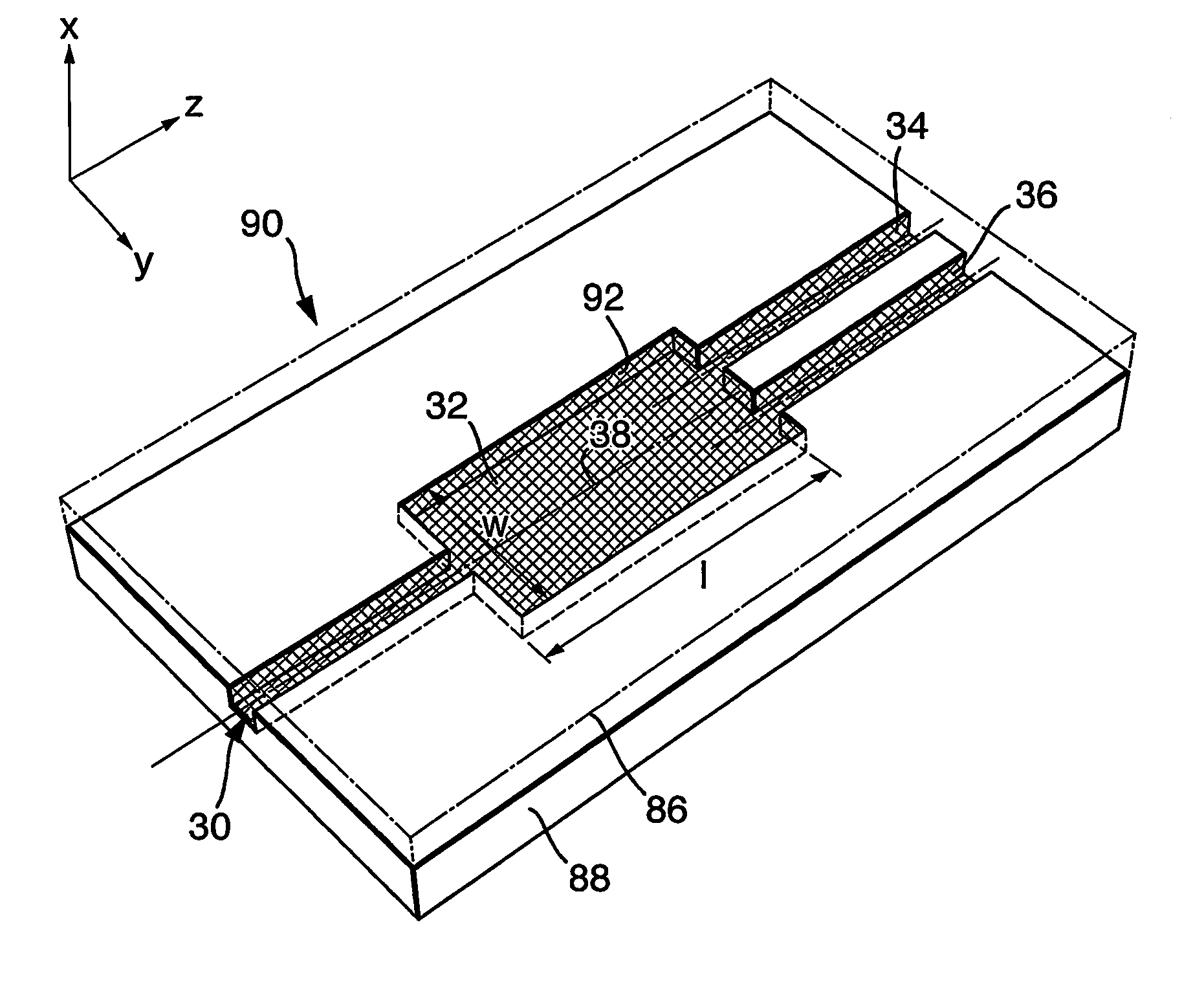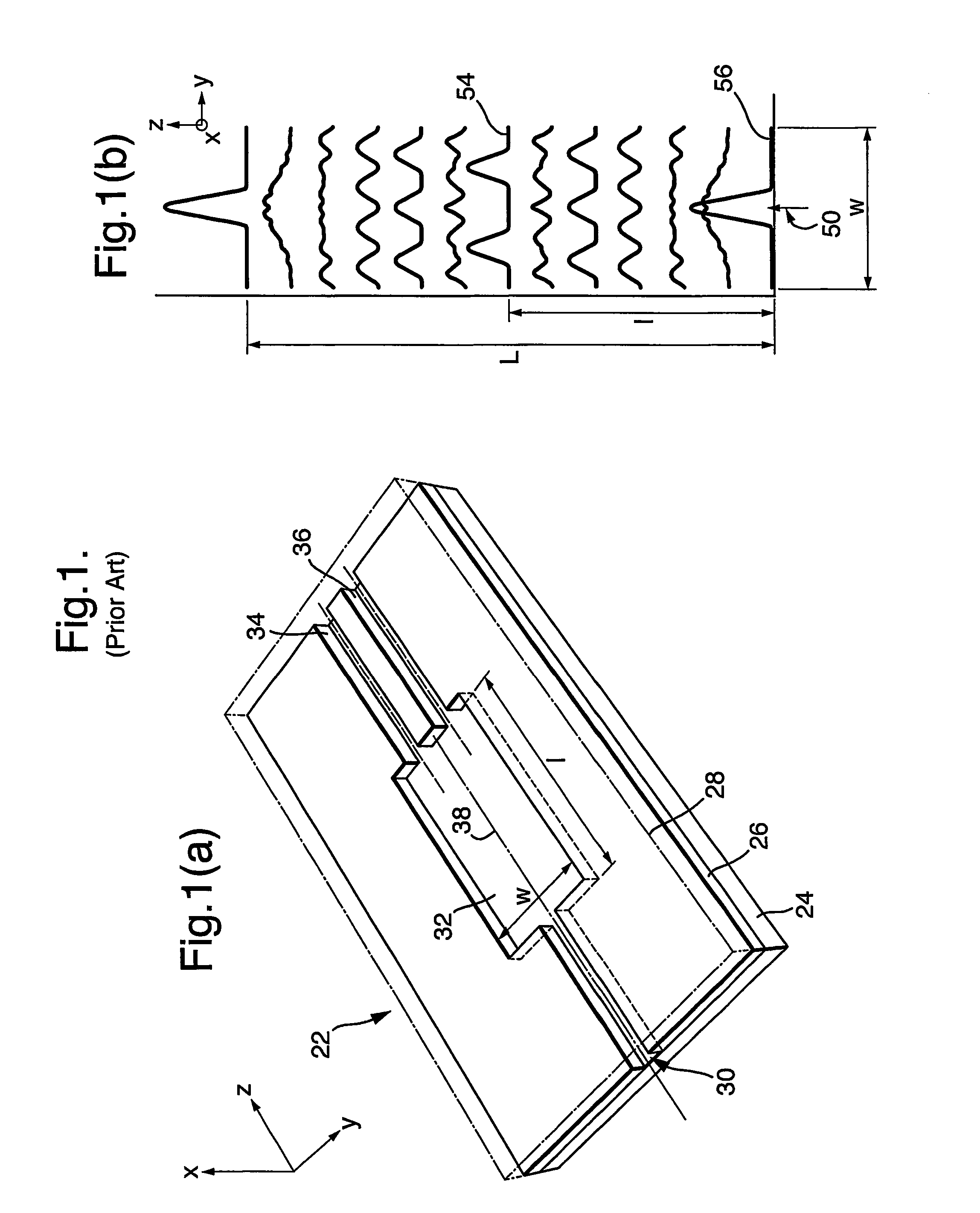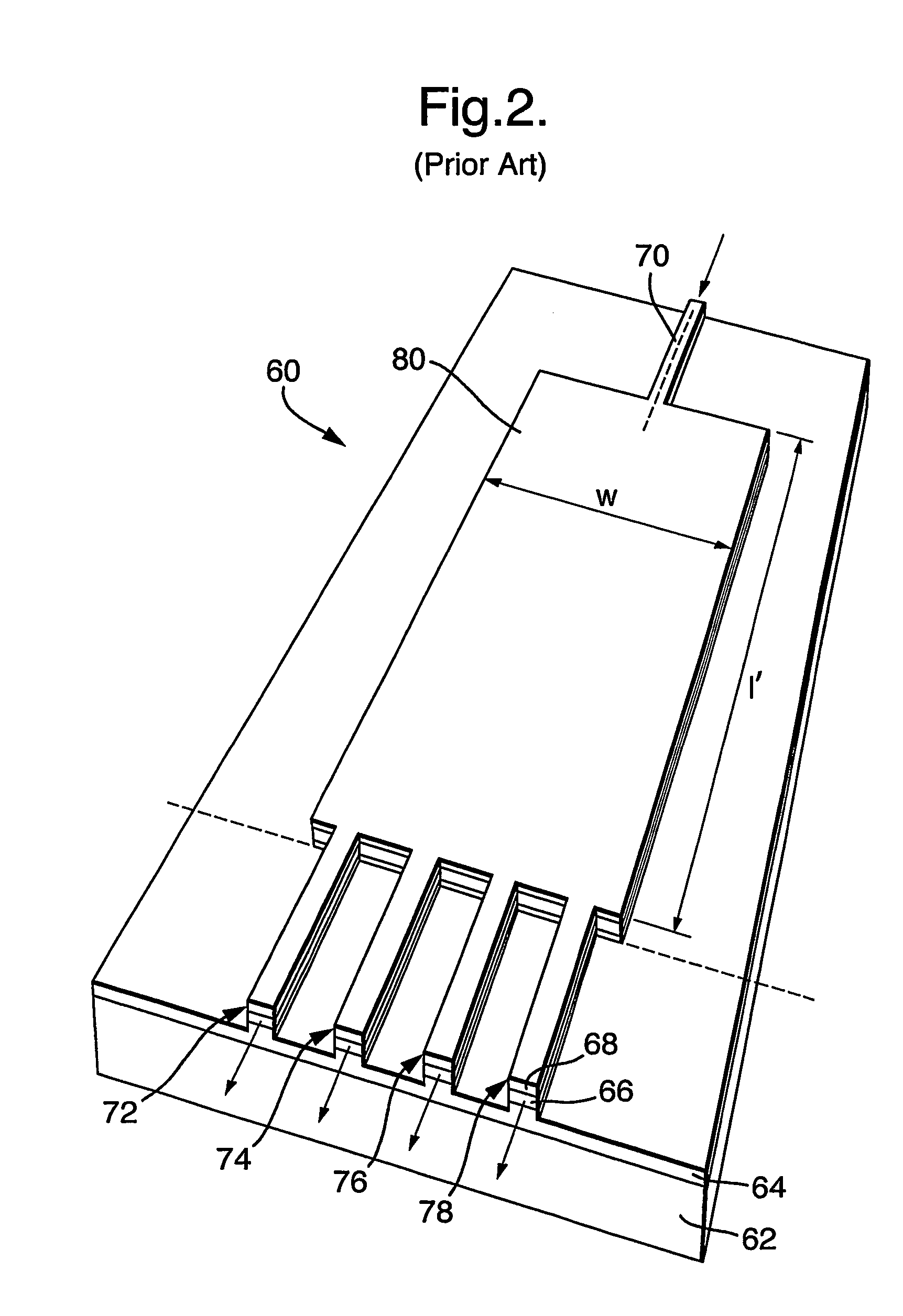Multi-mode interference optical waveguide device
a technology of optical waveguides and interference, applied in the direction of optical waveguide light guides, instruments, optics, etc., can solve the problems of limited total power density which can be transmitted, difficult to precisely control the dimensions of such devices, and difficult to achieve precise control of the dimensions of such devices, and achieve low optical loss, low optical power, and low optical power.
- Summary
- Abstract
- Description
- Claims
- Application Information
AI Technical Summary
Benefits of technology
Problems solved by technology
Method used
Image
Examples
Embodiment Construction
[0057]Referring to FIG. 1(a), a perspective view of a prior art two way hollow core waveguide MMI beam splitter 22 is shown. The MMI beam splitter 22 comprises a substrate layer 24, a waveguide layer 26 and a cover layer 28. The waveguide layer 26 defines a hollow core waveguide structure having an input waveguide 30, a multi-mode waveguide region 32 and two output waveguides 34 and 36.
[0058]The hollow core multi-mode waveguide region 32 is rectangular; being of length 1 and width W. The input waveguide 30 is ported centrally to, and the output waveguides 34 and 36 are located with the port centers spaced apart across, the multi-mode waveguide region 32. The input waveguide 30 and the output waveguides 34 and 36 are arranged so to support only fundamental mode propagation.
[0059]In operation, the fundamental mode supported by the input waveguide 30 is ported into the central multi-mode waveguide region 32. The length (l) and width (w) of the multi-mode waveguide region 32 are selecte...
PUM
 Login to View More
Login to View More Abstract
Description
Claims
Application Information
 Login to View More
Login to View More - R&D
- Intellectual Property
- Life Sciences
- Materials
- Tech Scout
- Unparalleled Data Quality
- Higher Quality Content
- 60% Fewer Hallucinations
Browse by: Latest US Patents, China's latest patents, Technical Efficacy Thesaurus, Application Domain, Technology Topic, Popular Technical Reports.
© 2025 PatSnap. All rights reserved.Legal|Privacy policy|Modern Slavery Act Transparency Statement|Sitemap|About US| Contact US: help@patsnap.com



